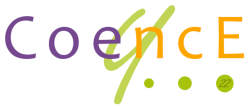Introduction
In today’s digital landscape, a website isn’t just a static online presence; it’s a dynamic tool for reaching and engaging your target audience. To maximize its effectiveness, it’s imperative to develop and design a website with both SEO (Search Engine Optimization) and marketing in mind from the very beginning. Neglecting these crucial aspects initially can lead to doubling your work down the line. In this comprehensive guide, we’ll explore why it’s essential to integrate SEO and marketing into your web design process and how even the slightest consideration can yield significant benefits.
1. The Synergy of Web Design, SEO, and Marketing
1.1 The Three Pillars of Online Success
- Web design, SEO, and marketing are interlinked pillars that support a successful online presence. They work in harmony to attract, engage, and convert visitors into customers or loyal followers.
1.2 Long-Term Vision
- Building a website with a long-term vision in mind is essential. A well-designed website is a foundation for future growth, and integrating SEO and marketing ensures your website is ready to scale and adapt.
2. Building a Solid SEO Foundation
2.1 Keyword Research and Integration
- Start by conducting thorough keyword research to identify the phrases and terms your target audience is searching for. Integrate these keywords naturally into your website’s content and structure.
2.2 User-Friendly Navigation and Structure
- An organized, user-friendly website structure not only enhances the user experience but also makes it easier for search engines to crawl and index your pages. A clear hierarchy and internal linking improve SEO.
2.3 Mobile Optimization
- In an era where mobile usage dominates, ensure your website is fully responsive. Mobile optimization is not only an SEO ranking factor but also crucial for user satisfaction.
3. Content is King: Creating SEO-Friendly Content
3.1 High-Quality, Relevant Content
- Create content that addresses your audience’s needs and interests. High-quality, relevant content not only attracts visitors but also keeps them engaged.
3.2 Regular Updates
- Consistently update your website with fresh content. Blogs, articles, or news sections are effective ways to do this. Regular updates signal to search engines that your website is active and relevant.
4. SEO Technical Considerations
4.1 Site Speed and Performance
- Fast-loading websites rank higher in search results. Optimize images, use a content delivery network (CDN), and choose reliable hosting to enhance site speed.
4.2 URL Structure and Descriptive Permalinks
- Craft descriptive and keyword-rich URLs for each page. Clean and structured URLs are user-friendly and benefit SEO.
5. The Role of Marketing in Web Design
5.1 Brand Consistency
- Your website should reflect your brand identity consistently. Use consistent colors, fonts, and messaging to create a unified brand image.
5.2 Call to Action (CTA) Placement
- Strategically place CTAs throughout your website to guide visitors toward desired actions. Whether it’s signing up for a newsletter or making a purchase, CTAs are essential for conversions.
5.3 Social Media Integration
- Integrate social media buttons and feeds to encourage social sharing and engagement. Leverage the power of social platforms to drive traffic to your website.
6. The Consequences of Neglecting SEO and Marketing
6.1 Invisible in Search Results
- Without proper SEO, your website may remain buried in search engine results, making it virtually invisible to potential visitors.
6.2 Missed Conversion Opportunities
- Poor marketing strategies can result in missed opportunities for lead generation and conversions. Your website may attract traffic but fail to convert it into customers.
6.3 Costly Retroactive Fixes
- Addressing SEO and marketing issues after your website is live can be costly and time-consuming. It’s much more efficient to incorporate these elements from the outset.
7. The Minimal Effort, Maximum Benefit Approach
7.1 Start Small, Think Big
- Even the smallest considerations, such as using descriptive image alt tags, can contribute to improved SEO. Start with these basics and gradually expand your SEO and marketing efforts.
7.2 Tracking and Analytics
- Implement website analytics tools from the beginning to monitor user behavior and track the success of your marketing efforts. Data-driven decisions are key to optimization.
8. The Bottom Line: Future-Proofing Your Website
8.1 Adaptability to Changing Algorithms
- Search engine algorithms and marketing trends evolve constantly. By building your website with SEO and marketing in mind, you ensure it can adapt to these changes.
8.2 Building a Strong Online Presence
- A well-designed website that’s optimized for search engines and aligned with your marketing goals creates a robust online presence. This presence is a valuable asset in a competitive digital landscape.
Conclusion
In the intricate web of the digital world, web design, SEO, and marketing are the threads that, when woven together, create a robust and effective online presence. Neglecting SEO and marketing during the web design phase is akin to building a beautiful house without windows—it may be stunning, but it won’t serve its purpose effectively. By considering even the smallest elements of SEO and marketing in your web design process, you’ll not only save yourself from future headaches but also set the stage for online success, ensuring that your website thrives in an ever-changing digital landscape.

